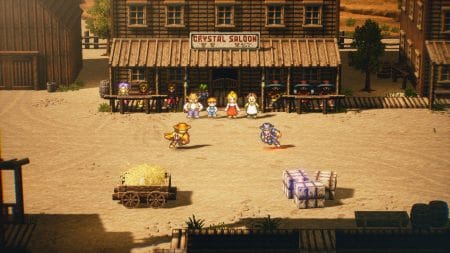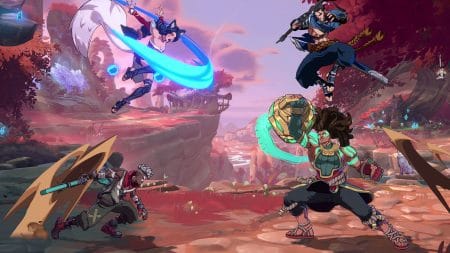If you’re reading this site, odds are you’ve been to a GameStop. Once a staple of many a shopping mall, the video game retailer has diminished in relevance and stature over the past two decades. As hardware manufacturers like Sony and Microsoft double down on a digital-first, service-led future, brick-and-mortar stores like GameStop feel practically obsolete. Factor in mass closures post-COVID, and it’s hard to feel optimistic about the company’s future.
Still, it’s hard not to root for GameStop. From midnight launches to rare finds within the used games section, the retailer was once a fundamental part of the gaming experience. Layer on the recent stock craze among retail investors, and GME holds some value yet.
In a new memoir, Always Learning: Lessons on Leveling Up from GameStop to Laura Mercier and Beyond, GameStop co-founder Gary Kusin details the inception of the company, then named Babbage’s. While there aren’t many major revelations for those familiar with the company, it’s easy to take some wisdom away from Kusin’s lessons of leadership.

Tales of GameStop
Founded in 1983 by Kusin and fellow Harvard Business School alum Jim McCurry, Babbage’s was born during an explosion of creativity within the games industry. As production of semiconductor chips ramped up, companies like Atari, Sega, and Nintendo were blowing older-generation games like Pong out of the water and promising new experiences rivaling cutting-edge arcade machines.
Supply and demand for home video games were about to skyrocket, giving Kusin and McCurry the opening they needed to break into the specialty retail space. Despite not having a natural passion for video games, Kusin saw an opportunity and quickly seized it.
By mid-1983, the pair had launched their first brick-and-mortar store, located in Dallas. Though the two had contemplated including “game” in the name (for obvious reasons), they abandoned it in favor of something more unique. (In hindsight, Kusin admits “that wasn’t the best decision.”)
Before long, Babbage’s had seven stores in the Dallas-Forth Worth area and was pulling talent from some unlikely places—including, believe it or not, a sorority at the University of Iowa. Despite initial growing pains, the company garnered the interest of private equity, most notably Mitt Romney of Bain Capital. (Romney would sit on GameStop’s board for 12 years.) By 1985, the retailer had expanded to 23 locations.
Kusin led Babbage’s until 1995, when he facilitated a merger with rival video game retailer Software Etc., then owned by a little-known company known as Barnes & Noble. In a rather interesting chapter, Kusin details a tense encounter with B&N founder Len Riggio, who originally got cold feet about the acquisition after having a bad dream.
Eventually, Kusin was able to convince Reggio—resulting in a new deal, a new name (NeoStar Retail Group), and the opportunity for Kusin to embark on new adventures.

Electronic Arts: World Class or Crabgrass?
Kusin goes on to detail his life post-Babbage’s—most notably, his time rebuilding Kinko’s and positioning it for a $2.4 billion sale to FedEx. But perhaps his most interesting commentary, especially for those reading this site, comes from his time working with Electronic Arts.
In his time at Babbage’s, EA was one of the retailer’s most important partners. “The connection between EA and Babbage’s literally goes back to day one for both companies,” Kusin explains.
He explains one of EA’s great innovations: video game packaging. In the days of floppy disks, publishers would send their games to Babbage’s in literal sandwich bags. But EA took a different approach, introducing game cases with sleek cover art to help sell their products. “Not a single video game publisher came close to their packaging for years,” Kusin recalled.
Kusin was so enamored by EA that, in 1995, he went on to join the company’s board of directors, where he’d serve for 15 years. In his words, “It was simply the best-managed video game company in the marketplace.”
To many, those words may ring hollow. After all, EA notably won back-to-back “Worst Company in America” awards according to Consumerist readers. EA’s then-CEO Peter Moore even acknowledged the company’s faults, only to immediately deflect blame in a combative blog post.
Those who have purchased EA products know another side to the story. But when it comes to Kusin and his experiences at GameStop, EA was an invaluable ally.

Looking Toward the Future
Throughout Always Learning, Kusin intersperses the various leadership takeaways he’s amassed as a multiple-time CEO. His book has plenty of interesting anecdotes and advice, but one passage feels particularly apt in today’s gaming landscape:
“Good business can be paralyzing. Everyone freezes, not wanting to do anything to slow things down or cause something unforeseen. But the time for change is precisely when things are going best.”
Kusin admits that, in his final years at Babbage’s, he missed out on two crucial opportunities: extending to outdoor strip malls, and investing in the used games market. (Hindsight is 20/20, as GameStop would eventually do both in his absence.)
It’s a striking reflection—one that reverberates far beyond the walls of just GameStop. If anything, Kusin’s advice runs directly counter to EA: a company that relies on microtransactions, rarely invests in new IP, and almost always rests on its laurels. That can’t be good business practice in the best of times or the worst of times.
Other Takeaways
A few more nuggets from Kusin’s memoir:
- When designing GameStop’s layout, Kusin and McCurry decided early on to display in-store monitors so players could see the latest games. That practice is still in effect today.
- One executive was extorted for $800 when a Cleveland building inspector threatened to “red-tag” a Babbage’s location. Kusin made him pay $800 out of pocket, but eventually reconciled with him, adding $800 to his year-end bonus.
- In a surreal story as CEO of Kinko’s, Kusin recounts learning that his company played a crucial role in the lead-up to and aftermath of 9/11.
- Kusin’s praise of EA comes within a chapter titled “Building a Great Culture,” which is sure to draw some laughs.
- In one chapter, Kusin writes, “I decided to leave 100 percent of my Babbage’s stock ownership in the new NeoStar Retail Group, as I believed it would go to the moon in the coming years.” Coincidence, or choice wordplay?
Always Learning: Lessons on Leveling Up from GameStop to Laura Mercier and Beyond by Gary M. Kusin, published by Three Wise Old Owls Press, is available now via Amazon, Barnes & Noble, and other major storefronts.
David is the founder of The Punished Backlog. He has a problem finishing games he starts.
Just beat: Donkey Kong Bananza.
Working on: Hollow Knight: Silksong.
Can't wait for: Metroid Prime 4: Beyond.
Follow David on Twitter at @David_Silbert to keep up to date with all things The Punished Backlog.











